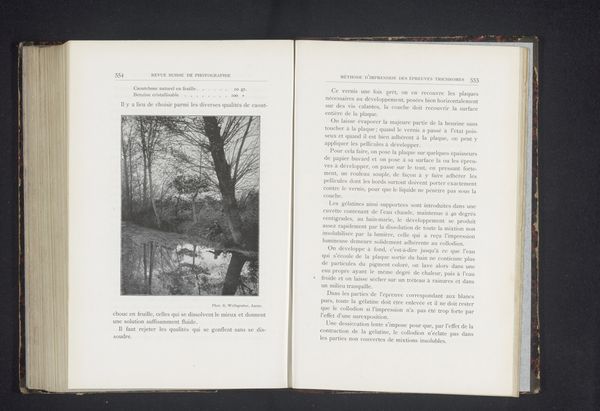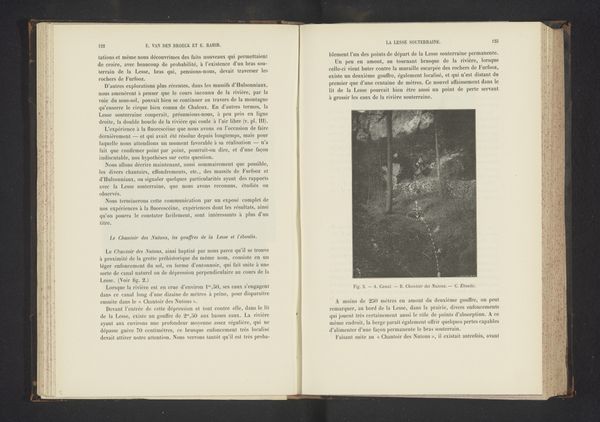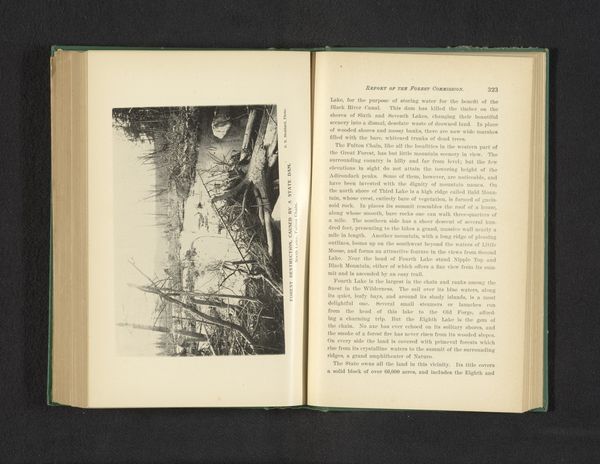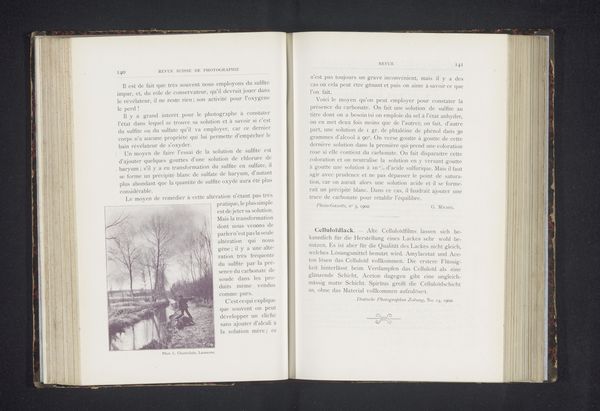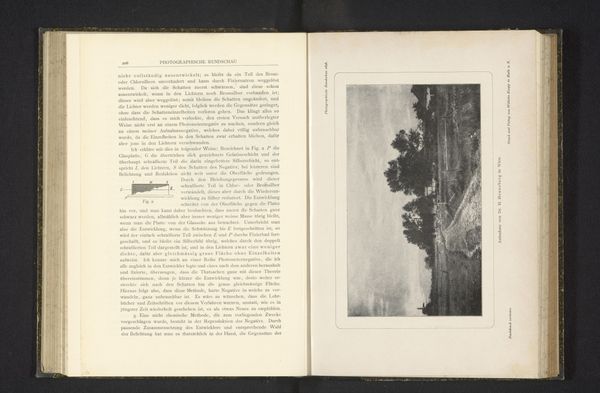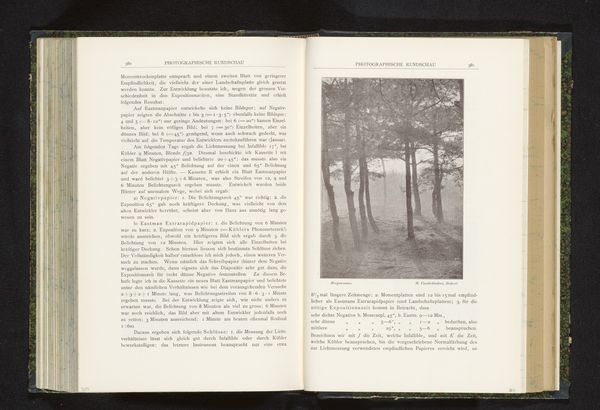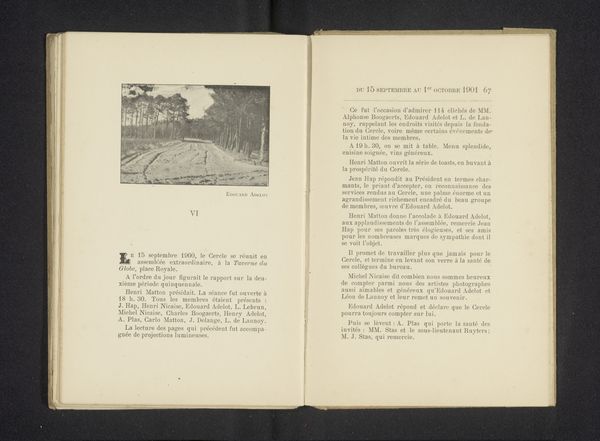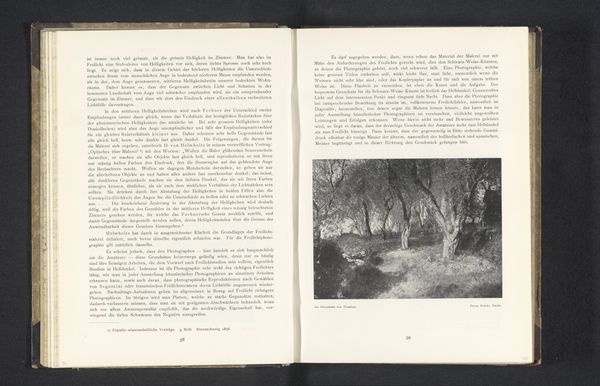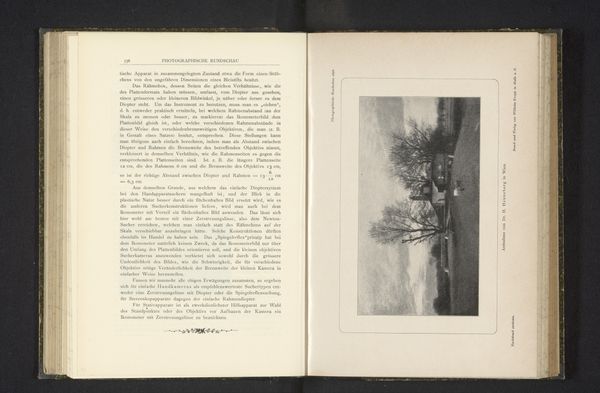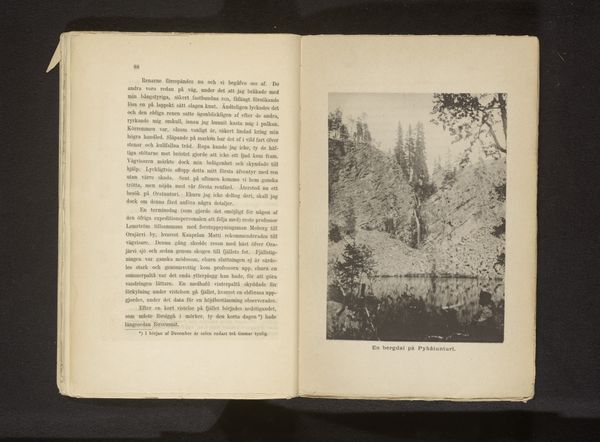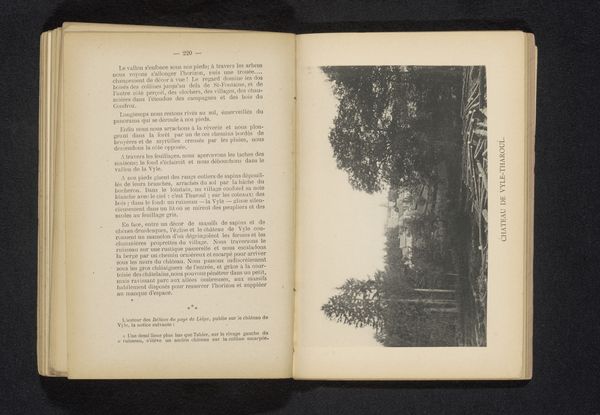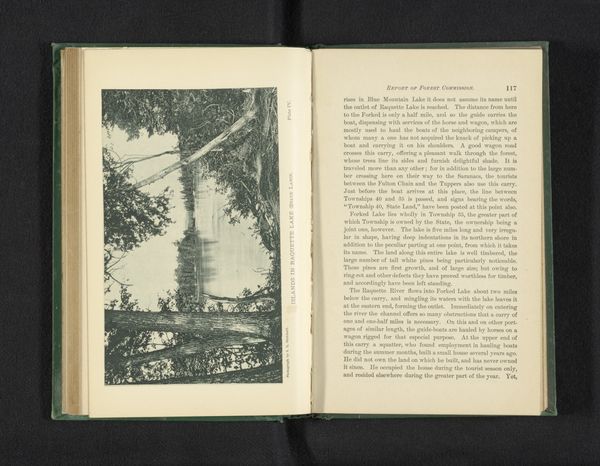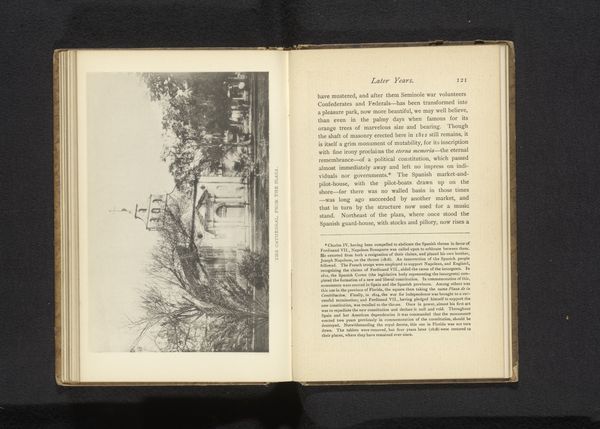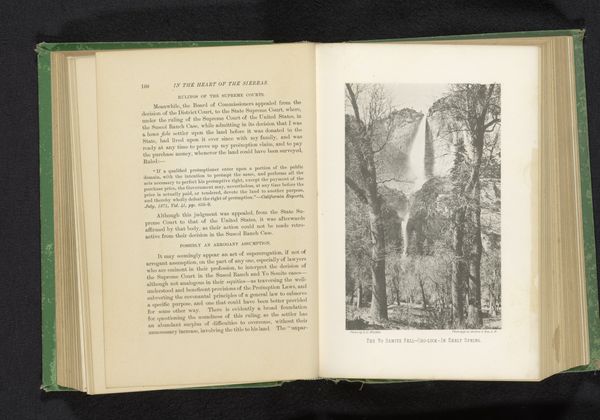
Dimensions: height 93 mm, width 121 mm
Copyright: Rijks Museum: Open Domain
Curator: Here we have "Landschap," an intriguing print photographed by Ph. et E. Link before 1902, nestled within the pages of a publication. It presents a landscape scene with trees dominating the composition. What are your immediate impressions? Editor: The image really captivates with its somber yet luminous feel, mostly using different gray tones, and the dark trees framing the sky give the scene this impressionistic feel of the scene as if it were some sort of impression. You get a sense of depth despite it being a very compressed black and white image. It seems very tactile. Curator: Indeed. The image exemplifies a certain movement towards photography mimicking painting which became a common aspiration of photographic societies, like the Linked Ring at the turn of the century. The composition uses the height of the trees to give it an overall romantic aesthetic. Editor: Right. And thinking about its context as a print within a publication – perhaps a photography journal of the time – brings another dimension to its materiality. This isn’t just about art for art’s sake; it’s about circulating ideas, techniques, and aesthetics through reproduction and distribution, as a social tool to make itself more popular. Curator: Exactly. Its public function is key here. It signals a cultural effort to codify and broadcast artistic ideals in photography and the image might have become part of larger debates about art’s public role. The role of nature too; landscapes served the public to create visual arguments about heritage, about history. Editor: It seems almost inevitable that "Landschap" evokes this very connection with the romantic era of nature representation. Thinking of how those prints were consumed by photographers, artists, amateurs… Curator: And this adds depth to the photograph itself. How was such photograph consumed, used and considered from its public? Considering questions of production, distribution and public appeal make this print more evocative as a vehicle of discussion around art history and photography. Editor: Precisely, the appeal to the natural world, the process, and social dissemination become one here, giving this otherwise melancholic impression, a breath of fresh perspective.
Comments
No comments
Be the first to comment and join the conversation on the ultimate creative platform.
